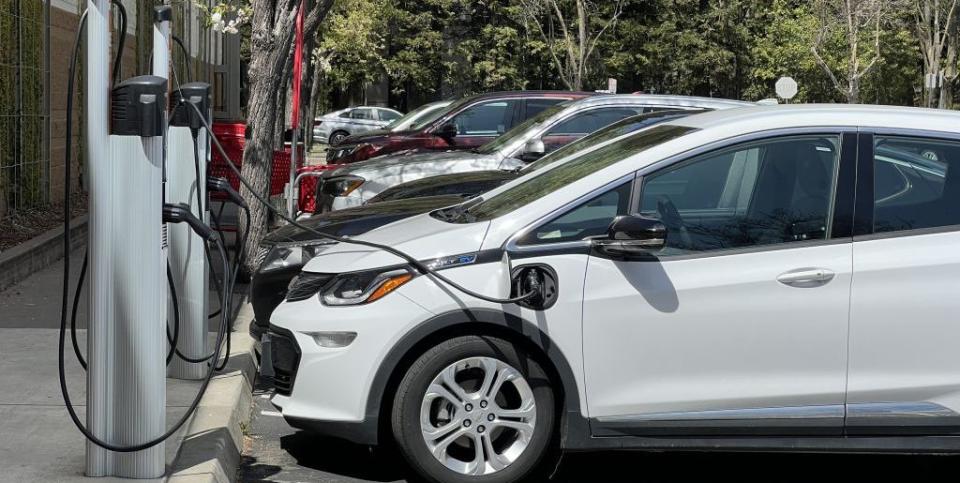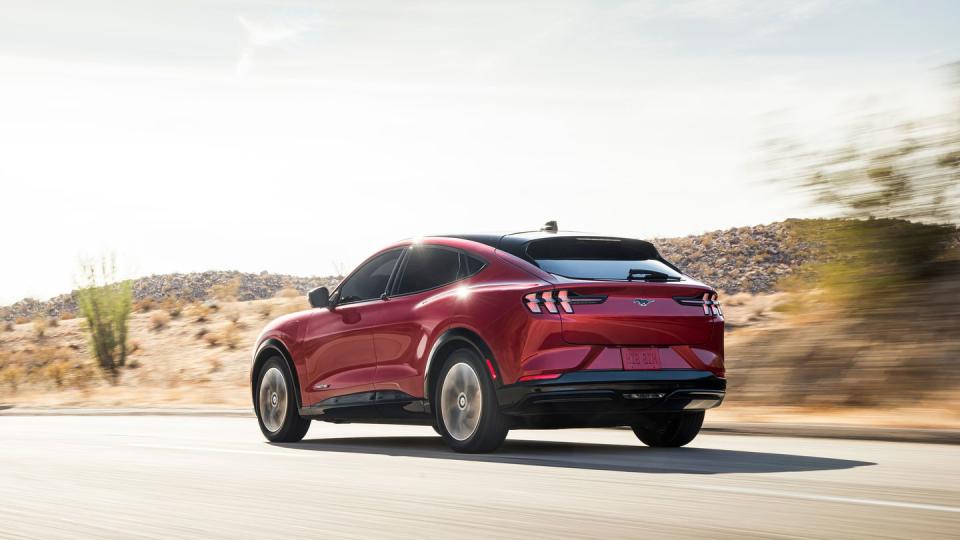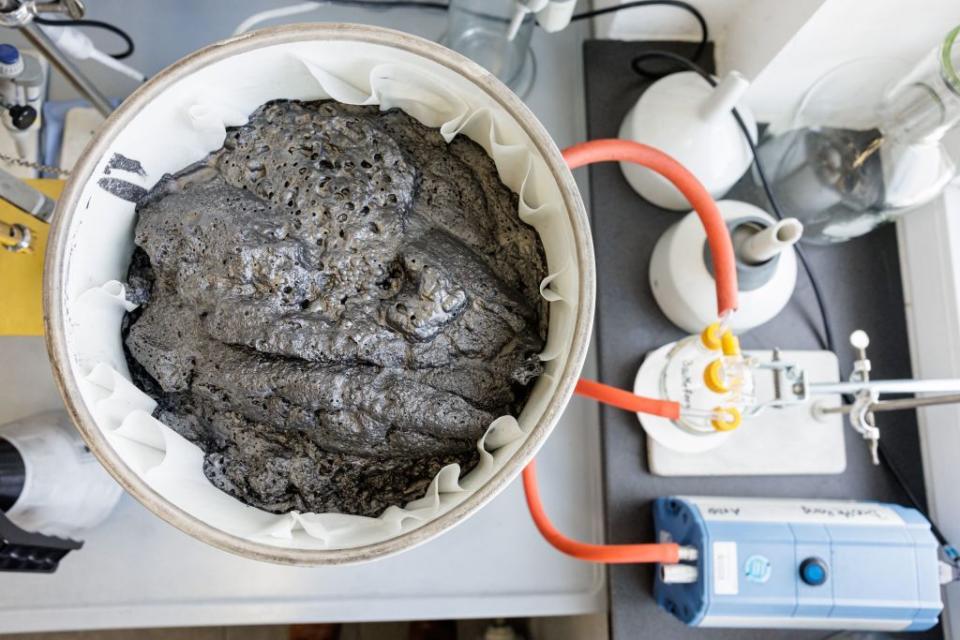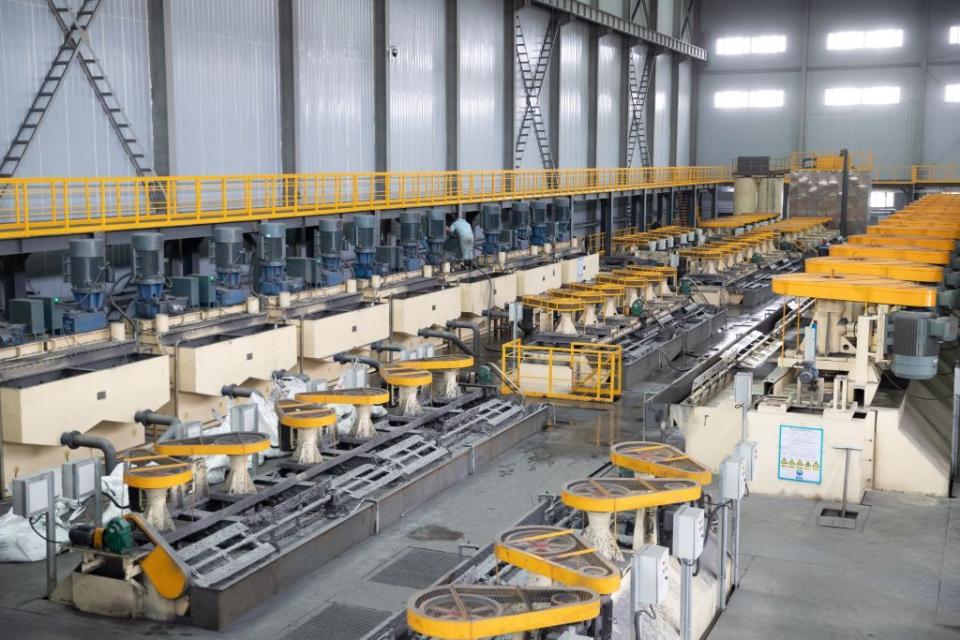Here’s Why Graphite Is Needed for Affordable Electric Vehicles

With an enhanced national electrification plan and clarification of Inflation Reduction Act provisions, the US is gearing up for the rapid adoption of electric vehicles.
Manufacturers and politicians may be onboard, but raw material shortages and geo-political tensions make for a potentially dire supply situation in the near future.
Lithium and cobalt are popular discussion points, but lesser-known graphite makes up around a quarter of EV batteries and presents its own set of supply challenges.
Understanding how to buy, own, and service an electric vehicle is surprisingly complex these days. With a growing marketplace and greatly improved technology, consumers have far more decisions to make, and the wrong choice could be an expensive one. That's because a portion of the Inflation Reduction Act (IRA), molded by the Environmental Protection Agency and US Department of the Treasury, offers accessible EV subsidies—for certain vehicles.
But what disqualifies an EV and its consumer from receiving these environmentally friendly subsidies? Price and size play a significant role—with an $80,000 vehicle price ceiling and credit differential depending on EPA size classification—but the real deciding factors lie within the car itself.
After months of murky interpretation, official guidance on the IRA now exists, with the primary factor for credit being 40% sourcing of “critical mineral and battery” components from North America or a US free trade partner by 2024. This will ramp up to 80% by the end of 2026, in an effort to concentrate EV supply chains in North America.

The basic chemical makeup of a lithium-ion battery includes an anode, cathode, separator, electrolyte, and two current collectors, but the Treasury Department frankly doesn't care about battery chemistry itself. It does, however, care about where the raw materials that create that chemistry come from. And the future of lithium, graphite, cobalt, and manganese supply is at the top of the list for manufacturers and the federal government alike.
In fact, a US Department of Energy report from 2019 describes these materials, particularly lithium and cobalt, as generally volatile due to the majority of foreign production and processing. Lithium is an especially hot topic right now, as the International Energy Agency says the auto industry could face a disruptive lithium shortage by 2025. And automakers like Toyota and Stellantis have acknowledged these lithium projections as fact, but there is another serious material issue on the horizon: graphite sourcing.
To learn more about this lesser-known raw material, we talked with Graphex Technologies CEO John DeMaio about what exactly graphite does for electric vehicles and where problems are bound to arise.
Autoweek: Can you give us the big picture of why graphite is important? What does it have to do with electric-vehicle tax credit incentives?
John DeMaio: Boy, where do we begin? Electric vehicle batteries look like big rectangular boxes if you break them down, but what's inside the box can be 1000 to 2000 or more individual cells that look kind of like giant flashlight batteries. The cathode side is where you have your lithium. As far as the percentage of the components in a battery cell, almost the entire anode is graphite. So that makes graphite about 45% of the individual cell.
On a total component basis for an EV battery, graphite is about 25% to 28% of the whole thing. It's by far the largest component by volume and mass in the battery. And people don't realize that a lithium-ion battery is sometimes up to 15 times more graphite than lithium. It's really the unsung player.
AW: How does raw graphite become a usable material for electric vehicle batteries?
JD: Graphite comes out of the ground like an ore. Mining operations will take that ore and concentrate it into what turns out to be about 95% purity. What we receive from mining operations is 94% to 96% pure carbon, basically graphite. We take that from 95% and purify it to 99.95%. Then we shape it into as close to spherical as we can. They usually wind up looking like little potatoes.
The graphite processing that we do is really what allows it to perform the way it's supposed to in an EV battery. In order to get to this point, we do what's called pitch coating, where we actually put a microscopic layer of pitch or asphalt around each particle. That acts to enhance its properties in the electric vehicle battery, meaning that it controls cell swelling. The process really adds a lot of the characteristics that are needed for EVs and also a lot of the dollar value.

AW: What does this graphite purification have to do with electric vehicle tax credit incentives?
JD: Fifty percent of the value added in the processing has to be done in North America and pitch coating adds more than 50% of the value to the graphite. By virtue of us having a pitch coating facility coming online in Michigan, that's the element that actually makes it qualify for the IRA.
AW: Even with a domestic graphite processing facility coming online, can manufacturers expect credit-worthy graphite anytime soon?
JD: The largest deposit of graphite on the planet is in the Northeast province of China, so our existing operations are located very close to the mine over there. However, with the proliferation of electric technology in North America and Europe, we recognize that it would make sense to diversify that supply chain. So we aligned ourselves with Brazilian, Canadian, Australian, Mozambique, Madagascar, and Tanzania. All of these places have different assets of graphite, some of which are not yet producing but that are scheduled to produce in the coming years.
With the IRA coming out and wanting to source materials from free-trade countries, we were already lined up with Canada and Australia, in particular. We hope to be considered qualifying soon, largely due to our collaboration with Northern Graphite, the only producing mine currently in North America.

AW: Has China always been dominant when it comes to graphite? What has changed?
JD: From a processing standpoint, I think 90% or more of the shaping and purifying happens in China. Some of it now happens in Korea and Japan. And ultimately it will start to happen here, but China dominates the market not only from a volume perspective but importantly from an expertise perspective as well. In the industry, having what I'll call a Chinese pedigree, as far as your technology goes, is very highly valued.
The United States—I'm not getting political here—is so intertwined with China that it's a little impractical to think we're going to extract ourselves overnight. We are trying as a society to replace 100-plus years of the internal-combustion engine. We're also trying to domesticate the entire supply chain simultaneously. And I think the IRA is a great motivator to make that happen, but let's also acknowledge the herculean task at hand.
AW: How does the long-term supply of graphite compare to some of the other materials that go into the batteries? Is there a good outlook for graphite?
JD: A tremendous outlook for graphite—there's so much of it on the planet. We use what's called Flake graphite, which usually comes out of the hard rock and there's plenty of it all over the place. The challenge with mining graphite has been its value. For the same effort you would expend to build a mine for graphite, you could build a mine for gold.
It probably will increase in value when you look at the demand for electric vehicles and the batteries that go into them. Especially because there's a big deficit on the very near horizon, which is why activity in the mining space is bustling. But as far as the availability of the element itself, it's widespread.
Were you aware of the role that graphite plays in EV batteries? Please share your thoughts below.

 Yahoo Autos
Yahoo Autos 